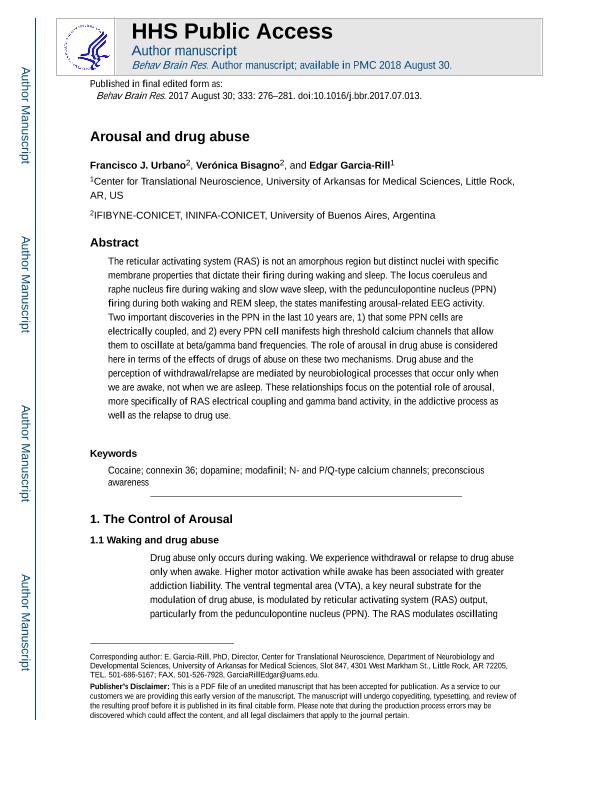Artículo
Arousal and drug abuse
Fecha de publicación:
08/08/2017
Editorial:
Elsevier Science
Revista:
Behavioural Brain Research
ISSN:
0166-4328
Idioma:
Inglés
Tipo de recurso:
Artículo publicado
Clasificación temática:
Resumen
The reticular activating system (RAS) is not an amorphous region but distinct nuclei with specific membrane properties that dictate their firing during waking and sleep. The locus coeruleus and raphe nucleus fire during waking and slow wave sleep, with the pedunculopontine nucleus (PPN) firing during both waking and REM sleep, the states manifesting arousal-related EEG activity. Two important discoveries in the PPN in the last 10 years are, 1) that some PPN cells are electrically coupled, and 2) every PPN cell manifests high threshold calcium channels that allow them to oscillate at beta/gamma band frequencies. The role of arousal in drug abuse is considered here in terms of the effects of drugs of abuse on these two mechanisms. Drug abuse and the perception of withdrawal/relapse are mediated by neurobiological processes that occur only when we are awake, not when we are asleep. These relationships focus on the potential role of arousal, more specifically of RAS electrical coupling and gamma band activity, in the addictive process as well as the relapse to drug use.
Archivos asociados
Licencia
Identificadores
Colecciones
Articulos(ININFA)
Articulos de INST.DE INVEST.FARMACOLOGICAS (I)
Articulos de INST.DE INVEST.FARMACOLOGICAS (I)
Citación
Urbano Suarez, Francisco Jose; Bisagno, Veronica; Garcia Rill, Edgar; Arousal and drug abuse; Elsevier Science; Behavioural Brain Research; 333; 8-8-2017; 276-281
Compartir
Altmétricas




